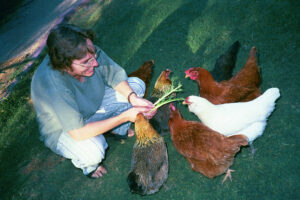
Backyard Chickens
Keeping Garden Chickens in North Carolina Backyard Flocks and Eggs Chicken Breeds Chicken Behavior: Indicators of …



El inglés es el idioma de control de esta página. En la medida en que haya algún conflicto entre la traducción al inglés y la traducción, el inglés prevalece.
Al hacer clic en el enlace de traducción se activa un servicio de traducción gratuito para convertir la página al español. Al igual que con cualquier traducción por Internet, la conversión no es sensible al contexto y puede que no traduzca el texto en su significado original. NC State Extension no garantiza la exactitud del texto traducido. Por favor, tenga en cuenta que algunas aplicaciones y/o servicios pueden no funcionar como se espera cuando se traducen.
Inglês é o idioma de controle desta página. Na medida que haja algum conflito entre o texto original em Inglês e a tradução, o Inglês prevalece.
Ao clicar no link de tradução, um serviço gratuito de tradução será ativado para converter a página para o Português. Como em qualquer tradução pela internet, a conversão não é sensivel ao contexto e pode não ocorrer a tradução para o significado orginal. O serviço de Extensão da Carolina do Norte (NC State Extension) não garante a exatidão do texto traduzido. Por favor, observe que algumas funções ou serviços podem não funcionar como esperado após a tradução.
English is the controlling language of this page. To the extent there is any conflict between the English text and the translation, English controls.
Clicking on the translation link activates a free translation service to convert the page to Spanish. As with any Internet translation, the conversion is not context-sensitive and may not translate the text to its original meaning. NC State Extension does not guarantee the accuracy of the translated text. Please note that some applications and/or services may not function as expected when translated.
Collapse ▲
Keeping Garden Chickens in North Carolina Backyard Flocks and Eggs Chicken Breeds Chicken Behavior: Indicators of …
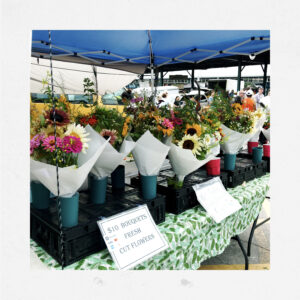
Learn how to select flowers, care for bouquets, answer frequently asked questions, as well as find resources. More …
Join us for the Sandhills Research Station (SRS) Turfgrass Regional Conference and Field Day on Wednesday, September 4, 2024, …
Written by: Charlotte Glen, Horticulture Agent There are many plant diseases that make growing tomatoes a challenge in the southeast. …

This is a debated topic, but the ‘Noise abatement in plant monocultures and plant communities‘ article is a good summary. …
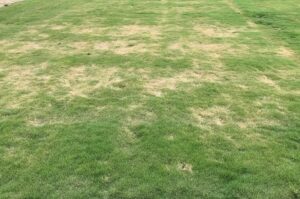
This spring has not been overly kind to our warm-season grasses—centipedegrass, St. Augustinegrass, bermudagrass, zoysiagrass. The last couple of …
Join the NC STMA on May 31, 2022 at the USA Baseball Training Facility in Cary, NC. Registrations will be limited, …
Written by: Charlotte Glen, Horticulture Agent I am willing to bet a life and death battle is taking place in …
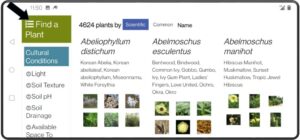
When you are looking at the Extension Gardener Plant Toolbox on a cell phone in a vertical position the menus …
Travis Gannon and Fred Yelverton As previously mentioned on Turffiles, oxadiazon was under registration review by the United States Environmental …
Written by: Charlotte Glen, Horticulture Agent There is a new bug in town and chances are if you have wisteria …
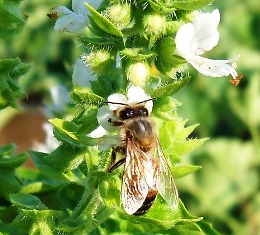
Natural insect control products are derived from plants, microorganisms and other naturally occurring materials. These products can successfully control …
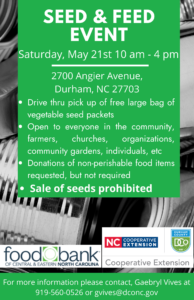
Anyone in North Carolina is welcome! Seed & Durham Seed & Feed– Free Seed Give Away-Flyer Sponsored by N.C. Cooperative Extension …
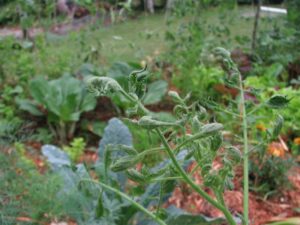
Check out this new NC State Publication Manage Compost and Soil Contaminated with Broadleaf Herbicides in Residential, School, and Community …
Please save the dates for three great upcoming Turf Center events. Sandhills Turfgrass Field Day – June 16, 2022 (registration …
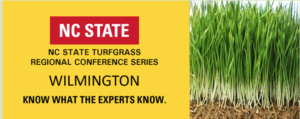
Due to demand, the Regional Turfgrass Conference is coming back to New Hanover County on June 6th. Attendees can …
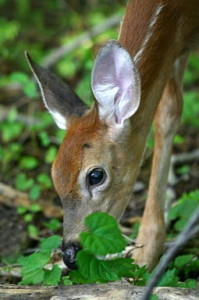
High populations and disappearing woodland habitat are forcing deer to seek food in our backyards and gardens. One of …

State Climate Office of North Carolina This three-part series of lessons covers climate change from the global perspective to what …

Thanks to contributions from many Master Gardener℠ volunteers, two great resources are now available to gardeners and horticultural educators: …
Charlotte Glen, Horticulture Agent Our mild winter has rapidly turned into an early spring, leading many gardeners to wonder if …

Similar to zoysiagrass mites, bermudagrass (Eriophyes cynodoniensis) mites are tiny, worm-like arachnids present in the …

Establishing and maintaining quality annual color beds requires a plan to prevent and control weeds. …

This publication describes the invasive Callery pear species, its offspring, and how it can harm …
This factsheet describes the biology of the cane lace bug or bamboo lace bug, Leptodictya …

This factsheet describes the biology of the banded sphinx moth or lesser vine sphinx, Eumorpha …

This factsheet describes the biology of the elm-grass root aphid, Tetraneura ulmi, and provides residential …
This publication for homeowners and landscapers describes how to mow, fertilize, irrigate, and control weeds …

This factsheet summarizes the characteristics of bees and addresses how to control them as an …